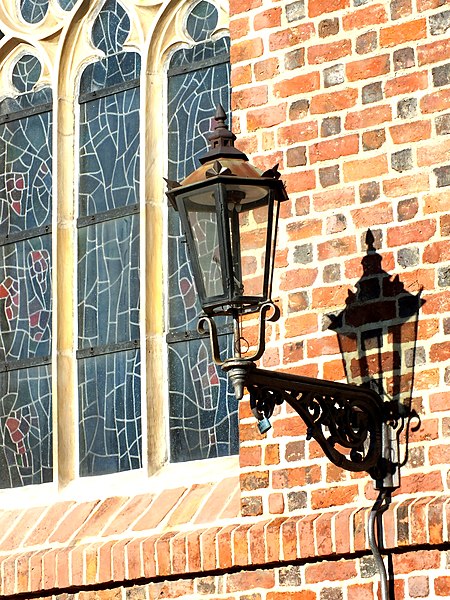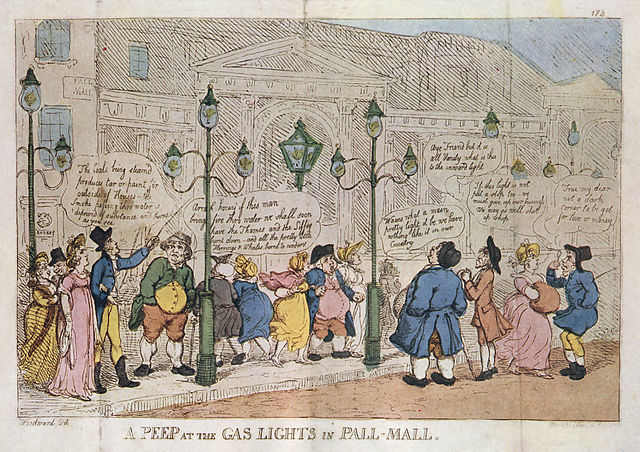An incandescent gas mantle, gas mantle or Welsbach mantle is a device for generating incandescent bright white light when heated by a flame. The name refers to its original heat source in gas lights which illuminated the streets of Europe and North America in the late 19th century. Mantle refers to the way it hangs like a cloak above the flame. Gas mantles were also used in portable camping lanterns, pressure lanterns and some oil lamps.
A Coleman white gas lantern mantle glowing at full brightness
Hot gas mantles. The lowest visible mantle has partially broken, reducing its light output
An 85 mm Chance Brothers Incandescent Petroleum Vapour Installation
Gas mantle in a street lamp (cold)
Gas lighting is the production of artificial light from combustion of a fuel gas such as hydrogen, methane, carbon monoxide, propane, butane, acetylene, ethylene, coal gas or natural gas. The light is produced either directly by the flame, generally by using special mixes of illuminating gas to increase brightness, or indirectly with other components such as the gas mantle or the limelight, with the gas primarily functioning as a heat source for the incandescence of the gas mantle or lime.
Gas lighting in the historical center of Wrocław, Poland, is manually turned off and on daily.
An illustration of designs of lamplights, c. 1900
Passersby marvel at new gaslighting (London, 1809)
Commemoration of the first U.S. street gas light, at the intersection of North Holliday Street and East Baltimore Street in Baltimore








